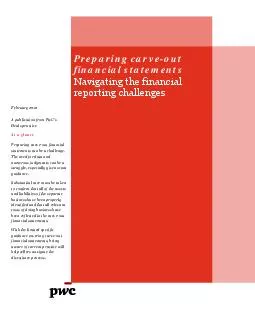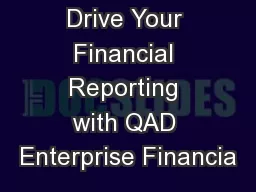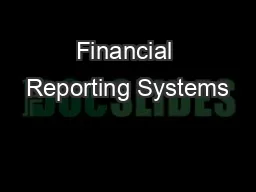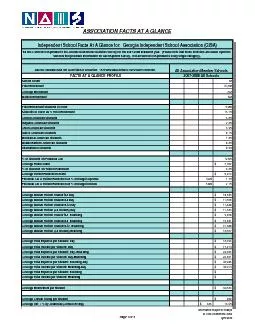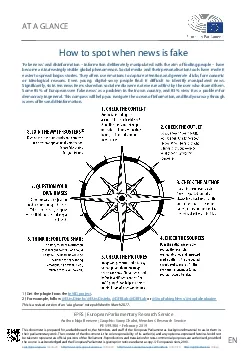PDF-Preparing carveout financial statements Navigating the financial reporting challenges
Author : debby-jeon | Published Date : 2015-03-03
The need for data and numerous judgments can be a struggle especially given scant guidance Substantial care must be taken to confirm that all of the assets and liabilities
Presentation Embed Code
Download Presentation
Download Presentation The PPT/PDF document "Preparing carveout financial statements ..." is the property of its rightful owner. Permission is granted to download and print the materials on this website for personal, non-commercial use only, and to display it on your personal computer provided you do not modify the materials and that you retain all copyright notices contained in the materials. By downloading content from our website, you accept the terms of this agreement.
Preparing carveout financial statements Navigating the financial reporting challenges: Transcript
Download Rules Of Document
"Preparing carveout financial statements Navigating the financial reporting challenges"The content belongs to its owner. You may download and print it for personal use, without modification, and keep all copyright notices. By downloading, you agree to these terms.
Related Documents

